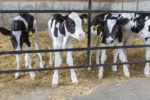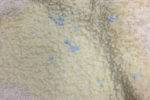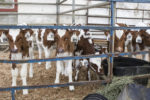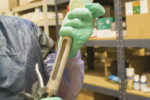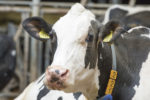Dairy Welfare
It is important to understand a cow’s flight zone and point of balance, along with other cattle-handling techniques to minimize stress to the animal and increase worker safety.
Read More
Using cameras and computer vision to assess dairy cow welfare
Consolidation in Canadian dairy farms drives the adoption of precision livestock tech, like 3D cameras and computer vision, showcased by ongoing research at the University of Manitoba with time-of-flight cameras for studying the welfare of lactating cows.
Read More
Revised Dairy Code of Practice: What does it mean for us?
The revised Code of Practice for the Care and Handling of Dairy Cattle will be integrated with proAction to reinforce consumer perceptions of Canadian dairy farmers as global leaders in animal care.
Read More
Differentiating mastitis from teat sealant residue at freshening
Correctly differentiating mastitis from teat sealant residue is important to minimize unnecessary interventions and to make sure we’re using antibiotics judiciously on farms.
Read More
Pain management: Hurting more than your bottom line
Research suggests pain in dairy cattle affects productive life in the parlour and at the slaughterhouse.
Read More
Living up to our new code of practice
The updated Code of Practice for the Care and Handling of Dairy Cattle has come into effect, and although daunting, its implementation is likely to bring win-wins for the farmer and the cattle they care for.
Read More
Vaccination protocols: Maximizing vaccine efficacy
Vaccines should be used as a management tool to bolster the special forces of the adaptive immune system.
Read More
Using data to unlock cow secrets
Dairy cows are good at masking health and behavior to align with their groups, but actionable data can help you discover what they are saying without words.
Read More


